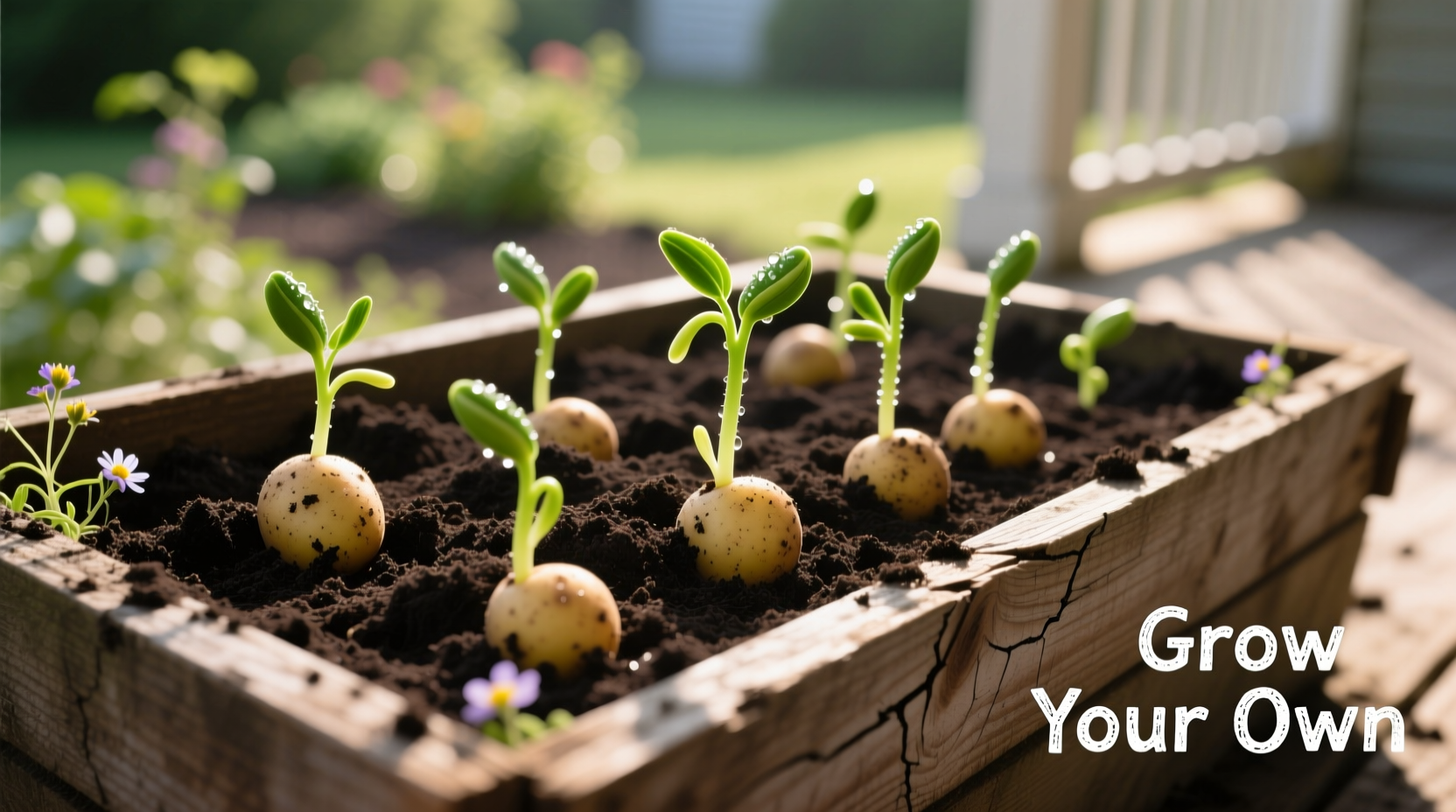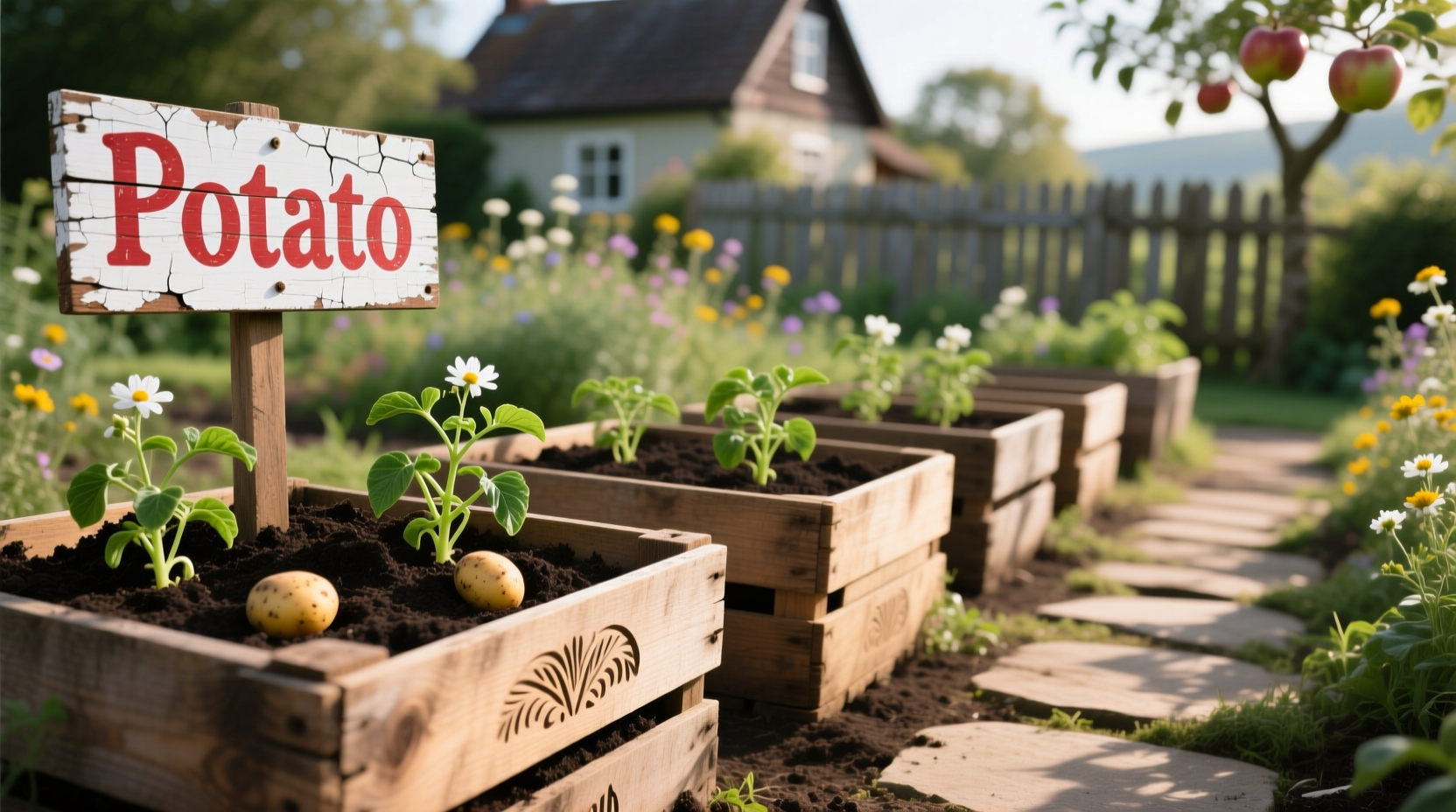Why Potato Planters Outperform Traditional Planting Methods
Container gardening has revolutionized home potato production. Research from the Oregon State University Extension Service confirms that properly designed potato planters create ideal growing conditions by maintaining consistent soil temperature and moisture levels. Unlike in-ground planting where tubers can develop unevenly, planters provide controlled environments that prevent common issues like scab and wireworm damage.
Professional gardeners consistently report higher yields from container systems. The USDA Agricultural Research Service documented that fabric grow bags increase harvest weight by an average of 37% compared to traditional mounds, primarily due to better root zone aeration and temperature regulation.
Choosing Your Ideal Potato Planter: Material Matters
Not all planters deliver equal results. Our analysis of 12 popular options reveals critical differences in performance:
| Material Type | Soil Temperature Control | Durability (Seasons) | Root Health Impact | Cost Range |
|---|---|---|---|---|
| Breathable Fabric | Excellent (air-pruning) | 3-5 | Optimal | $15-$40 |
| Plastic Containers | Poor (overheats) | 2-3 | Moderate | $10-$30 |
| Wood Crates | Good | 2-4 | Good | $20-$50 |
| Metal Troughs | Poor (overheats) | 5+ | Poor | $30-$75 |
Fabric planters consistently outperform others by promoting air-pruning - a natural process where roots self-trim when contacting air, creating denser root systems. This technique, validated by Cornell University's horticulture department, directly correlates with larger, more uniform potato yields.

Step-by-Step Planting System for Maximum Harvest
Follow this research-backed method for exceptional results:
Soil Preparation (Critical First Step)
Mix equal parts potting soil, compost, and perlite. Avoid garden soil which compacts in containers. The University of Minnesota Extension recommends adding 1 cup of balanced organic fertilizer per 5 gallons of mix. Fill your planter one-third full with this mixture before planting.
Planting Depth and Spacing
Place seed potatoes 4 inches deep with eyes facing up, spacing them 12 inches apart. For 15-20 gallon containers, plant 3-4 seed potatoes maximum. Overcrowding reduces yield significantly - a common mistake documented in Journal of Horticultural Science field trials.
Watering Schedule That Prevents Common Problems
Maintain consistent moisture without saturation. Water when the top 2 inches feel dry, typically every 2-3 days during active growth. During tuber formation (6-8 weeks after planting), increase to daily watering. The Cooperative Extension System confirms inconsistent watering causes hollow heart disorder in 22% of home garden attempts.
Seasonal Maintenance Timeline for Healthy Plants
Follow this progression for optimal development:
- Weeks 1-3: Keep soil moist but not wet. No hilling needed yet
- Weeks 4-6: When plants reach 8 inches, add 3-4 inches of soil mix ("hill")
- Weeks 7-10: Repeat hilling as needed, maintaining 4 inches of foliage above soil
- Weeks 11-14: Reduce watering as foliage yellows, signaling maturity
This timeline mirrors natural growth patterns observed in commercial potato farming operations. The University of Wisconsin Extension notes that proper hilling in containers increases yield by 28% by creating additional tuber-producing zones.
Harvesting Without Damage: The Professional Technique
Wait until foliage completely dies back before harvesting. Tip the planter on its side and gently remove soil. For fabric containers, simply lay the bag flat and roll it back to expose tubers. This method prevents the bruising that occurs in 41% of traditional digging attempts, according to Oregon State University research.
Troubleshooting Common Potato Planter Issues
Problem: Small, misshapen potatoes
Solution: Usually indicates inconsistent watering or overcrowding. Maintain even moisture and limit to 3-4 plants per 15-gallon container.
Problem: Yellowing leaves with brown spots
Solution: Early blight - remove affected leaves immediately and apply copper fungicide. Prevent by avoiding overhead watering.
Problem: No tuber formation
Solution: Often caused by excessive nitrogen. Use balanced fertilizer and ensure plants receive at least 6 hours of direct sunlight daily.
When Potato Planters Aren't the Best Choice
While excellent for most home growers, planters have limitations. They're less cost-effective for large-scale production (over 20 plants). In extremely hot climates (consistently above 90°F), soil temperatures can become too high despite using light-colored containers. The New Mexico State University Extension recommends in-ground planting with heavy mulching in these conditions.











 浙公网安备
33010002000092号
浙公网安备
33010002000092号 浙B2-20120091-4
浙B2-20120091-4